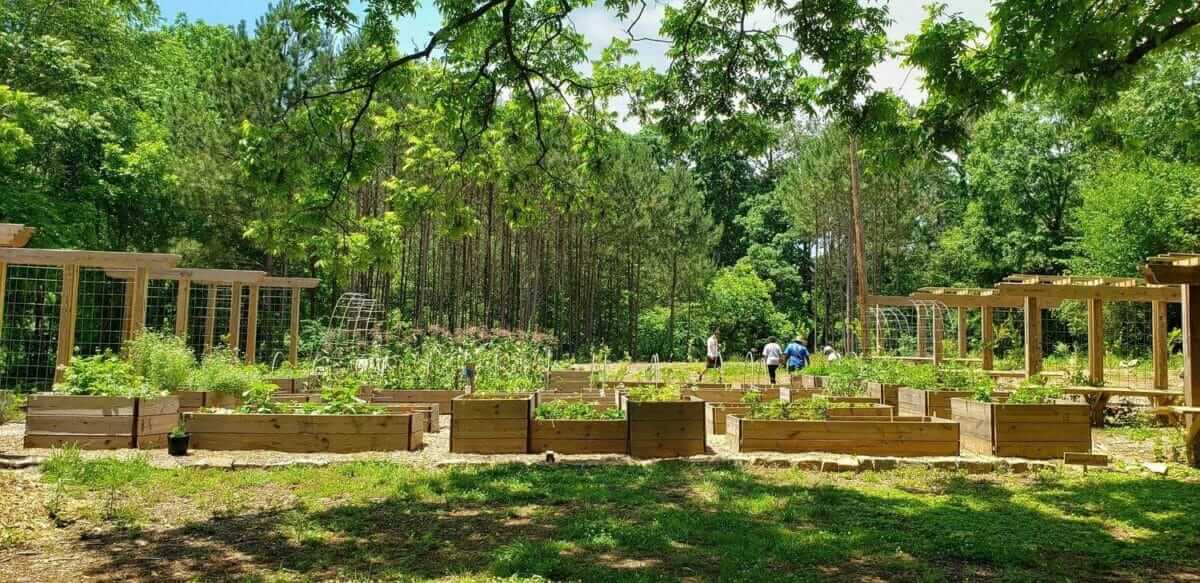It’s one piece of the city’s plan to snuff out food deserts.

The city of Atlanta is growing a solution to address its food deserts.
On seven acres of what was formerly a pecan farm in its Browns Mill neighborhood, the city has transformed the land into what is believed to be the country’s largest free food forest.
In the edible space, 2,500 pesticide-free plants and mushrooms are growing, providing fruits, vegetables and nuts for the underserved Browns Mill area. In the southeast neighborhood, one in three residents is reported to live in poverty, with the nearest grocery store being a 30-minute bus ride away. Throughout the city, an estimated one in four Atlantans lives in a food desert.
Food forests, also known as forest gardens, are low-maintenance, sustainable arrangements of edible plants that are designed to mimic natural ecosystems. Comprised mostly of perennial plants, there’s no need for tilling, weeding, fertilizing or irrigation. While food forests first became popular in European and North American gardening in the 1980s, the concept has taken off in recent years as cities have started to integrate edible public spaces in their planning. To date, there are more than 70 other free food forests that have been planted across the US.
Atlanta’s food forest development began in 2016 when national non-profit the Conservation Fund purchased the land on which it exists. Prior to 2014, it was illegal to grow food on residential lots in Atlanta. The project is part of a more recent city plan to bring healthy food within half a mile of 85 percent of its residents by 2022.
Last year, ownership of the land was transferred to the city. Its department of parks and recreation manages and maintains the space along with more than 1,000 volunteers. Grant funding from the US Department of Agriculture’s Forest Service’s Community Forest Program, Open Space Conservation, Trees Atlanta and the Conservation Fund has allowed the food forest to continue to exist.
And despite the intent to create a sustainable food source to tackle food insecurity among residents, city officials say it’s been so much more than that. The forest, they add, has been a valuable tool that continues to build community, foster relationships and teach residents about urban agriculture.
Do you have a contact information for the person in charge of this or someone that worked on this? We will be taking over just under 8 acres which we will be growing food to donate to our hungry community members. I would love to talk to anyone who has done or is doing the same thing.
Lou